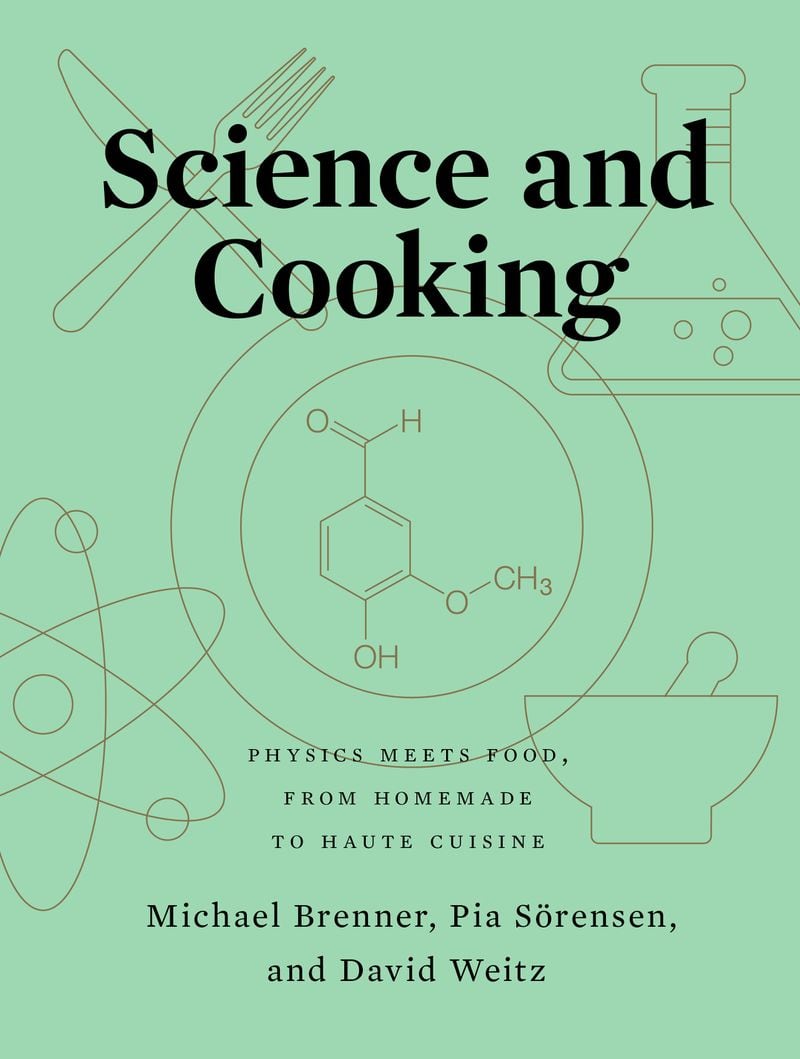
“Science and Cooking: Physics Meets Food, From Homemade to Haute Cuisine” by Michael Brenner, Pia Sörensen and David Weitz. Used with permission of the publisher, W. W. Norton & Company Inc. All rights reserved.
Credit: Handout
Credit: Handout
“Science and Cooking” is all about physics and chemistry, which is what the professors teach and research. But the true topic is how and why recipes work. The first example in the book is a deconstruction of a “standard” chocolate chip cookie recipe versus chef Christina Tosi’s Cornflake Chocolate Chip Marshmallow Cookies. But don’t fear, it becomes a fun and tasty lesson on texture and flavor molecules.
One of my favorite recipes in the book, chef Carme Ruscalleda’s Crema Catalana, comes from the chapter on Texture, Flavor and Elasticity. It turns out that an egg is an example of a heat stable gel. And as anyone who’s fried an egg knows, and the authors explain in detail, “once the gel of a solid egg is formed, there’s no going back.” But gentle heat plus other ingredients can coax the eggs into creamy deliciousness.

“Mastering Bread” by Marc Vetri, Claire Kopp McWilliams and David Joachim (Ten Speed, a division of Penguin Random House LLC).
Unlike my grandmother and mother, I’m not much of a baker, especially when it comes to bread. I know sourdough has become the signature loaf of the pandemic, but it’s not my thing.
Thankfully, “Mastering Bread: The Art and Practice of Handmade Sourdough, Yeast Bread, and Pastry” by Marc Vetri, Claire Kopp McWilliams and David Joachim (Ten Speed Press, $32.50) covers a lot of ground.
Vetri is the founder of the Cucina Bread Program “part of the American movement to reclaim high-quality bread as a cornerstone of our food culture.” And the book offers a complete course through chapters on grain, mixing, fermentation, shaping and baking.
But of all the information and inspiration to be found, the explanation of why serious bakers measure ingredients by weight instead of volume is key. I’m convinced that everyone who buys this book, or bakes a bunch, needs to buy a digital scale.
Beyond the realm of heavenly yeast bread and rolls (like my mother made), the recipes that fascinated me most were soft pretzels, and an Italian version of hard pretzels called Taralli. Yes, there’s shaping and boiling and baking to be done, but the loop shape is super cool, and the crunchy end product is perfect with beer, chilled wine or cocktails.
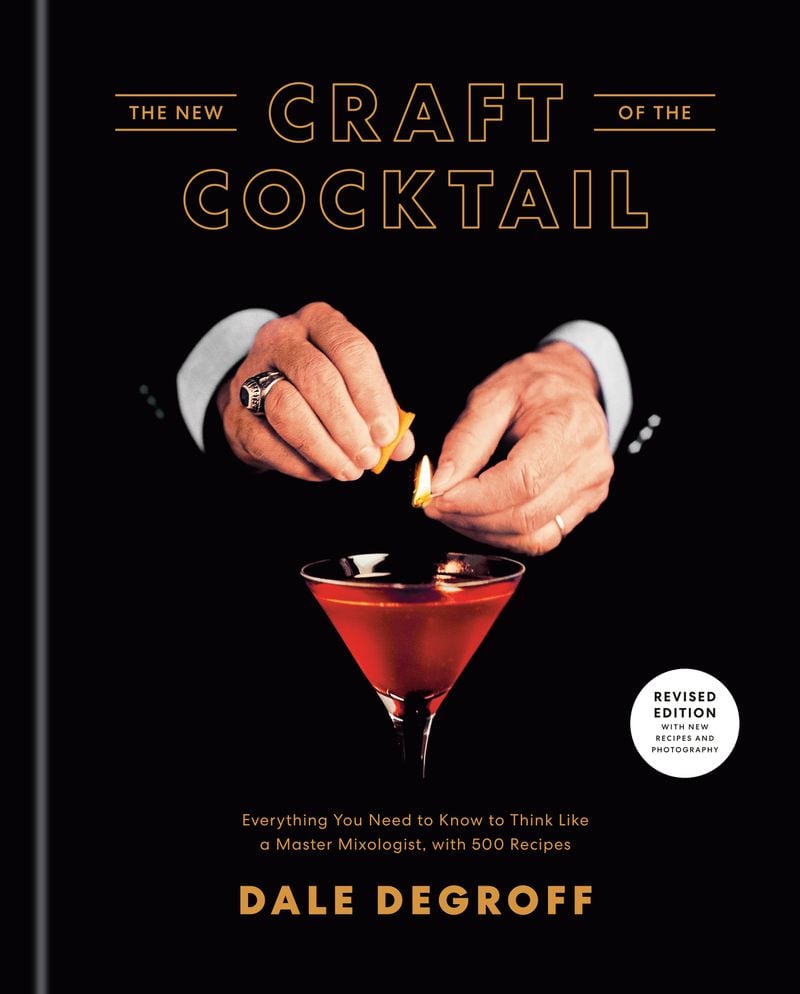
“The New Craft of the Cocktail” by Dale DeGroff (Clarkson Potter, a division of Penguin Random House, LLC).
Credit: Handout
Credit: Handout
Speaking of drinks, Dale DeGroff’s “The New Craft of the Cocktail: Everything You Need to Know to Think Like a Master Mixologist” (Potter, $35) is a tutorial in the art of bartending. DeGroff worked in New York’s Rainbow Room at the top of 30 Rock, and Windows on the World on top of the World Trade Center. He released the first edition of his book, “The Craft of the Cocktail” in 2002, but the 9/11 attacks made the timing “so right and so wrong,” he writes in the intro.
Nonetheless, DeGroff became known as a founding father of the modern cocktail revival, and a major influence on a new wave of bartenders and cocktail bars. What’s more, he and his wife, Jill, are the co-founders of the Museum of the Cocktail in New Orleans.
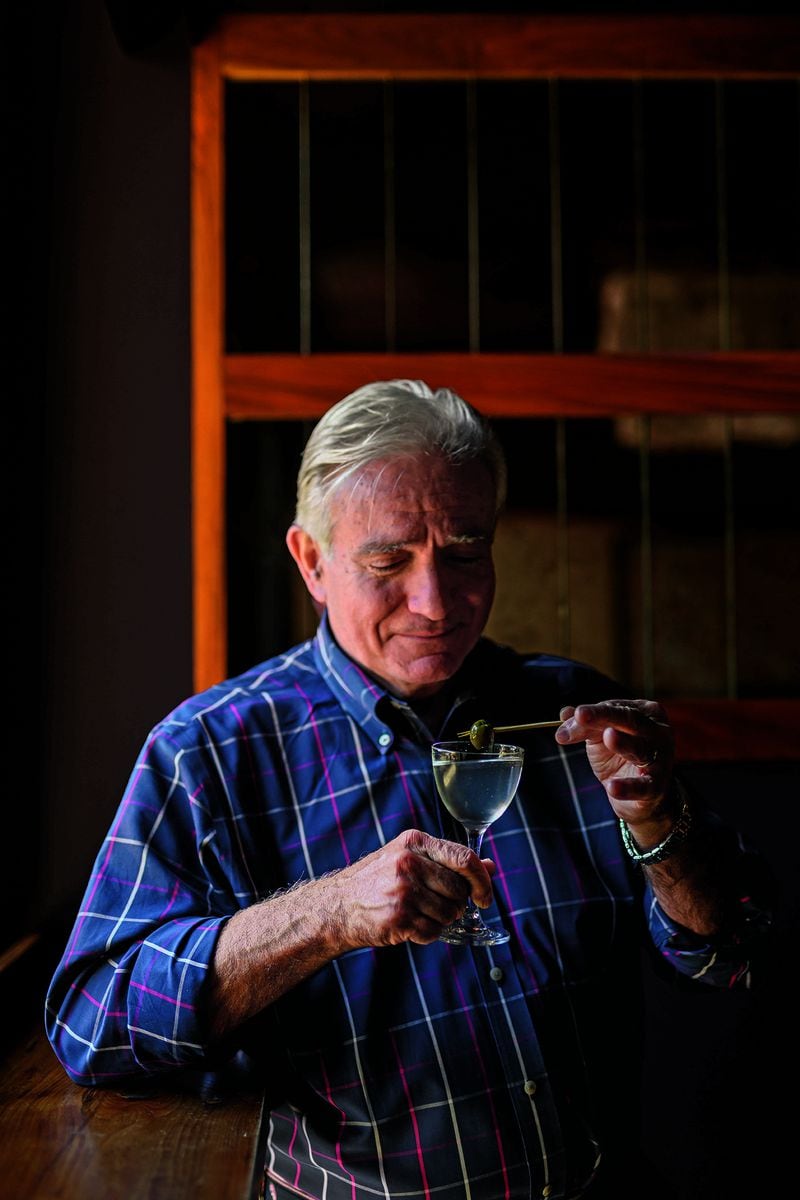
Dale DeGroff, known as a founding father of the modern cocktail revival, offers a tutorial in the art of bartending in “The New Craft of the Cocktail.” Courtesy of Daniel Krieger
Credit: Daniel Krieger
Credit: Daniel Krieger
“The New Craft of the Cocktail” includes chapters on history, ingredients, tools and techniques. Not surprisingly, though, the heft of the hardback book is in the recipes, which include lots of helpful notes and interesting anecdotes.
Though I’m much more of a bourbon guy, I’ve become interested in the complexity of scotch cocktails. DeGroff features two versions of one of my favorites, the oh-so-Scottish B
obby Burns. The variations in the spirits are fascinating, and he serves them both with a shortbread cookie for a garnish.
RECIPES
These recipes from three new cookbooks serve up science, along with a delicious Spanish dessert, a surprising Italian snack, and two versions of a classic Scottish cocktail.
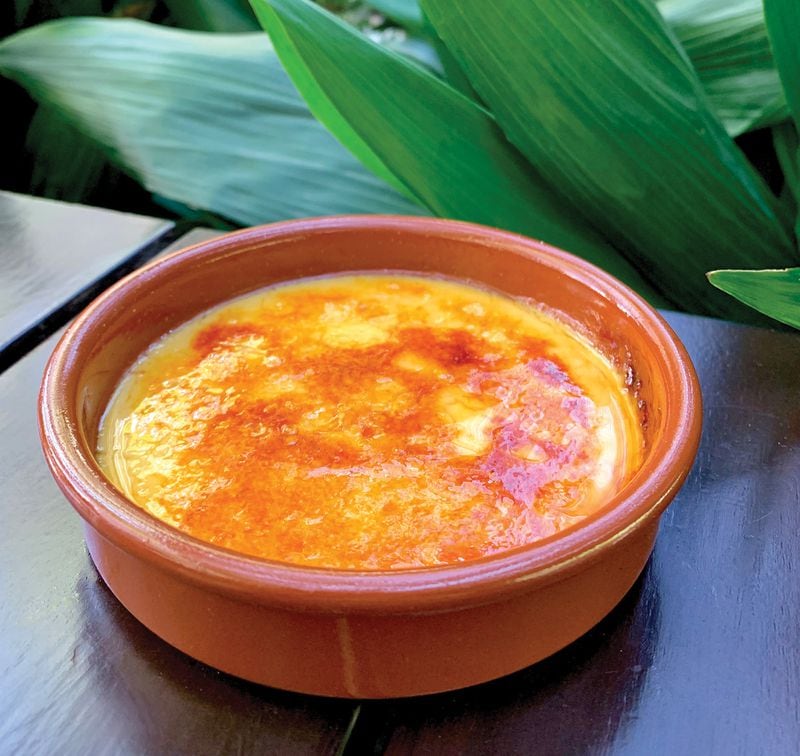
Carme Ruscalleda’s Crema Catalana is the Spanish version of crème brûlée. Excerpted from “Science and Cooking: Physics Meets Food, From Homemade to Haute Cuisine.” W. W. Norton & Company Inc.
Credit: Handout
Credit: Handout
Crema Catalana
This crema catalana is the Spanish version of crème brûlée. The secret to the smooth silky texture of this dish is this: When eggs are heated quickly as in hard-boiled eggs, certain egg yolk proteins become scrambled by aggregating with each other. But in the environment of gentle heat, diluted with milk along with some sugar and flour to coat the proteins, the yolk proteins eventually form a fine network that gives the custard its elasticity. Crema catalana is an excellent example of how certain molecules can be coaxed toward a specific result by providing the correct conditions.
Crema Catalana
- 1 liter (4 1/4 cups) milk
- 20 grams (5 teaspoons) thin lemon peel, coarsely chopped
- 3 grams (1 ounce) cinnamon stick
- 150 grams sugar (3/4 cup), plus more for the topping
- 45 grams (1/2 cup) all-purpose flour
- 9 large egg yolks
- In a small saucepan, bring the milk, lemon peel, and cinnamon stick to a boil, then remove from the heat. Allow the milk to completely cool down, about 1 hour.
- Strain the milk, then divide the milk into two equal parts.
- In a clean pot, combine half of the milk, the sugar, and the flour. Stir to make sure the sugar and flour are completely dissolved, then heat the mixture, stirring constantly, until it comes to a boil. Allow to boil for 15 seconds, then remove from the heat.
- Add the remaining milk and mix well. Add the egg yolks and mix until homogeneous. Strain the mixture through a chinois into a clean pot.
- Heat the mixture over medium heat, stirring constantly, until the temperature reaches 176 degrees Fahrenheit (80 degrees Celsius). Strain again through a chinois.
- Portion the cream into individual serving dishes. It is important to mix the cream while portioning, as this will give it more air, shine, and delicacy.
- Use a blowtorch or traditional crema catalana sugar caramelizer (a round disk of iron with a wooden handle) to caramelize the top sugar layer. To heat the iron, press it against the stove burner or on the stove flame until it is flaming red.
- Just before serving, sprinkle a generous layer of sugar over the custard and hold the blowtorch or hot iron closely over the top to caramelize the sugar. Serve immediately.
Serves 4-6.
Nutritional information
Per serving: Per serving, based on 4: 482 calories (percent of calories from fat, 29), 17 grams protein, 70 grams carbohydrates, 4 grams fiber, 16 grams total fat (7 grams saturated), 436 milligrams cholesterol, 150 milligrams sodium.
Per serving, based on 6: 321 calories (percent of calories from fat, 29), 11 grams protein, 47 grams carbohydrates, 3 grams fiber, 11 grams total fat (5 grams saturated), 291 milligrams cholesterol, 100 milligrams sodium.
Excerpted from “Science and Cooking: Physics Meets Food, From Homemade to Haute Cuisine” by Michael Brenner, Pia Sörensen and David Weitz. Used with permission of the publisher, W. W. Norton & Company Inc. All rights reserved.
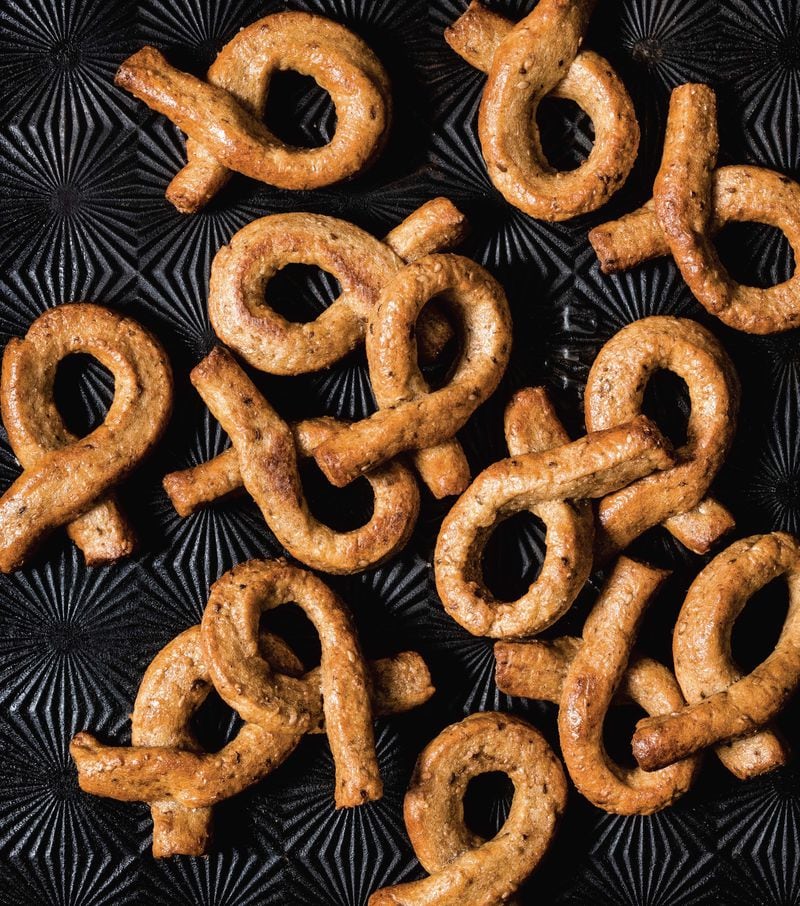
Taralli are Italy’s answer to hard pretzels. They’re boiled before baking, similar to the process for making bagels. Ed Anderson/Penguin Random House
Credit: Ed Anderson
Credit: Ed Anderson
Taralli
Italy’s answer to hard pretzels, Taralli are especially popular in Puglia. They’re boiled before baking, similar to the process for making bagels, which sets the crust before these crunchy snacks even hit the oven. The loop shape makes it easy to pick them up and dunk them in chilled wine.
Taralli
- 4 grams (2 teaspoons) fennel seeds
- 30 grams (3 1/2 tablespoons) sesame seeds
- 130 grams (1 1/8 cups) whole-grain durum flour
- 130 grams (1 1/8 cups) whole-grain hard wheat flour
- 8 grams (1 1/3 teaspoons) salt
- 60 grams (4 1/2 tablespoons) extra-virgin olive oil
- 110 grams (1/2 cup) white wine
- 10 grams (1 1/2 teaspoons) honey
- Toast the fennel seeds in a dry saute pan over medium heat until fragrant, 2 to 3 minutes, shaking the pan to prevent scorching.
- Remove to a bowl and toast the sesame seeds in the same pan in the same way.
- Buzz up the toasted fennel seeds with a spice grinder or break them up with a mortar and pestle (or leave the fennel seeds whole if that’s your style).
- Combine durum and hard wheat flours, the seeds, and salt in a medium mixing bowl. Add the oil, wine, and honey and mix by hand until everything is incorporated.
- Turn the dough out onto a dry countertop and hand-mix until smooth, 3 to 4 minutes. You can also mix the dough in a stand mixer with the dough hook for 6 minutes, instead.
- Cover the dough with a tea towel and let rest for 30 minutes.
- Preheat the oven to 325 degrees.
- Set up a half sheet pan or cutting board lined with a tea towel as well as 2 half sheet pans lined with parchment paper.
- Fill a large wide saucepan with water and bring to a boil over high heat.
- Cut a strip off the dough ball and roll it into a rope about the diameter of a No. 2 pencil. Cut the rope into 4- to 6-inch segments and roll each rope segment smooth, tapering the ends. Curl each piece into a loop like a scarf, pinching the touch point to seal. Place each loop on the parchment paper-lined pan and repeat with the rest of the dough.
- To boil, carefully drop about a dozen Taralli into the water. At first, they will sink; then after about a minute, they will float. At that point, use a slotted spoon to transfer the Taralli to the towel-lined tray. Boil another small batch. After a minute or so on the towel, the boiled Taralli will be dry enough to transfer to the parchment paper-lined sheet pan.
- Rotate through the process until all the Taralli are boiled, dried, and placed on sheet pans. Load the trays of Taralli into the oven and bake until they are lightly browned all over, about 25 minutes. They should be somewhat crisp and will continue to harden as they cool. These puppies keep for a very long time, 2 or 3 weeks, in an airtight container at room temperature.
Makes about 60.
Nutritional information
Per serving: Per pretzel: 30 calories (percent of calories from fat, 42), 1 gram protein, 4 grams carbohydrates, 1 gram fiber, 1 gram total fat (trace saturated fat), no cholesterol, 43 milligrams sodium.
Reprinted with permission from “Mastering Bread” by Marc Vetri, Claire Kopp McWilliams and David Joachim, copyright © 2020. Photographs by Ed Anderson. Published by Ten Speed, a division of Penguin Random House LLC.
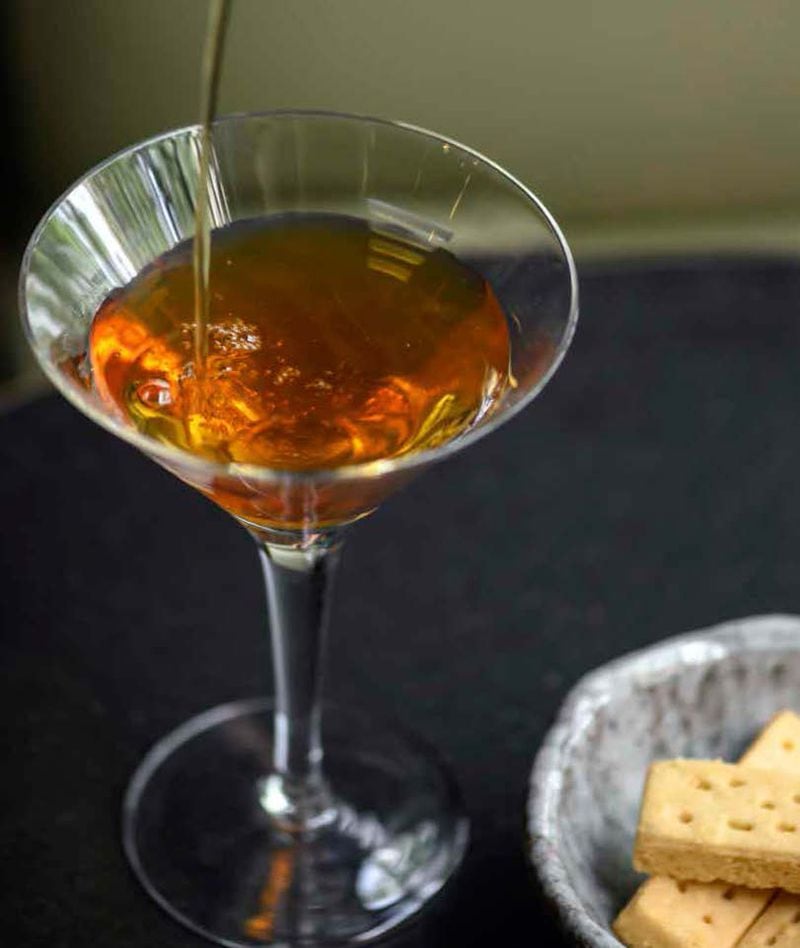
Bobby Burns cocktail. Daniel Krieger/Clarkson Potter
Credit: Daniel Krieger
Credit: Daniel Krieger
Bobby Burns
Frank Meier’s version of this drink in “The Artistry of Mixing Drinks” (1936) calls for one part sweet vermouth and one part dry vermouth.
Bobby Burns
- 2 ounces blended or lighter-style malt Scotch whisky
- 1 ounce Italian sweet vermouth
- 1/4 ounce Bénédictine
- Shortbread cookie for garnish
- Stir all the ingredients (except the garnish) with ice in a mixing glass and strain into a chilled cocktail glass. Serve with the shortbread cookie on the side. Makes 1 cocktail.
Nutritional information
Per serving: Per cocktail: 206 calories (percent of calories from fat, 0), trace protein, 5 grams carbohydrates, no fiber, no fat (no saturated fat), no cholesterol, 2 milligrams sodium.
Bobby Burns Naren’s
This variation on the theme was created by Naren Young for Saxon + Parole, New York City.
Bobby Burns Naren’s
- 1 ounce Dewar’s 12-year-old scotch
- 1 ounce Martini & Rossi sweet vermouth
- 1/4 ounce Bénédictine
- 2 dashes of Dale DeGroff’s Pimento Aromatic Bitters
- Shortbread cookie for garnish
- Stir all the ingredients (except the garnish) with ice in a mixing glass and strain into a chilled cocktail glass. Serve with the shortbread cookie on the side. Makes 1 cocktail.
Nutritional information
Per serving: Per cocktail: 206 calories (percent of calories from fat, 0), trace protein, 5 grams carbohydrates, no fiber, no fat (no saturated fat), no cholesterol, 2 milligrams sodium.
Reprinted with permission from “The New Craft of the Cocktail” by Dale DeGroff, copyright © 2020. Photographs by Daniel Krieger. Published by Clarkson Potter, a division of Penguin Random House LLC.
Read more stories like this by liking Atlanta Restaurant Scene on Facebook, following @ATLDiningNews on Twitter and @ajcdining on Instagram.

